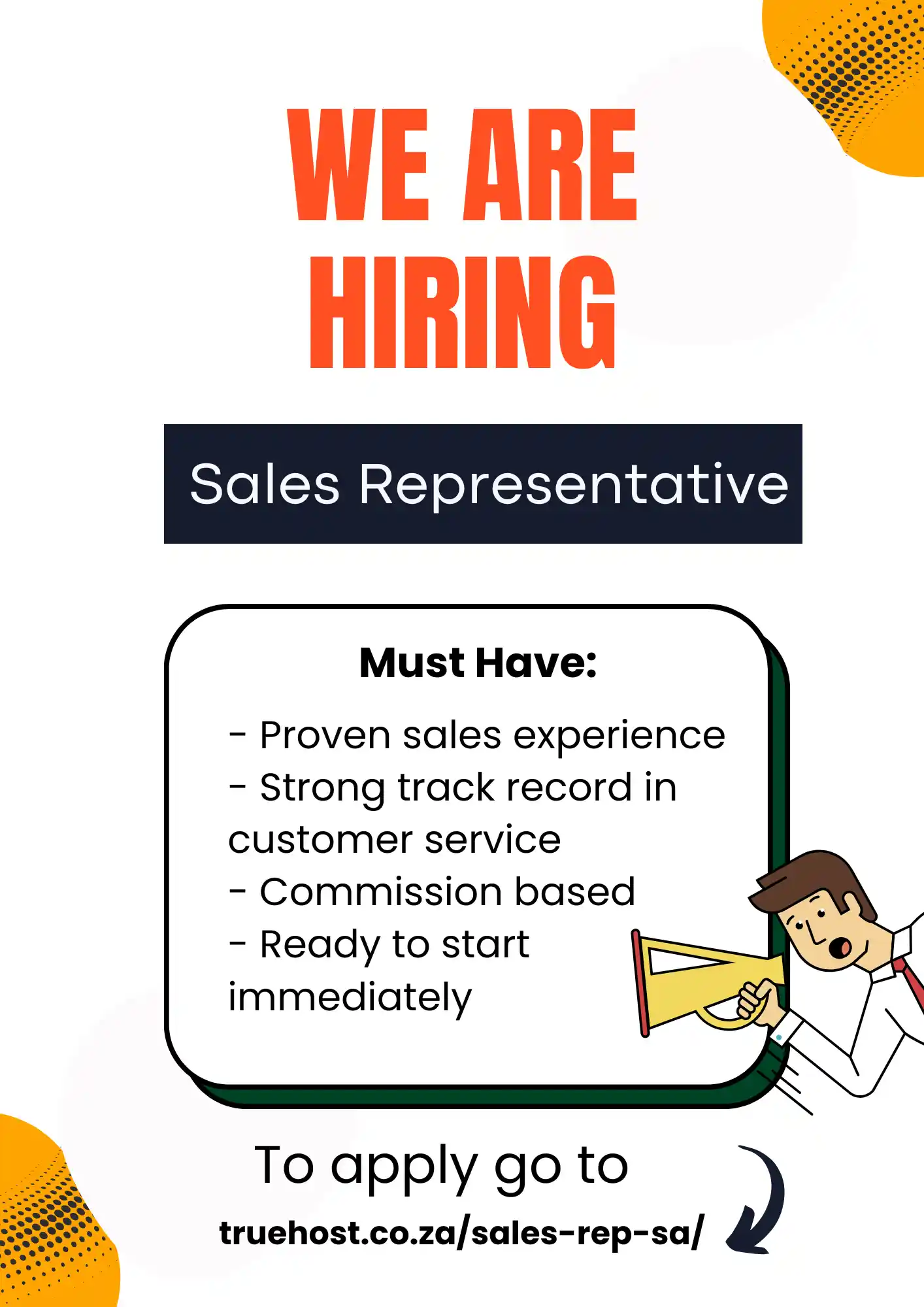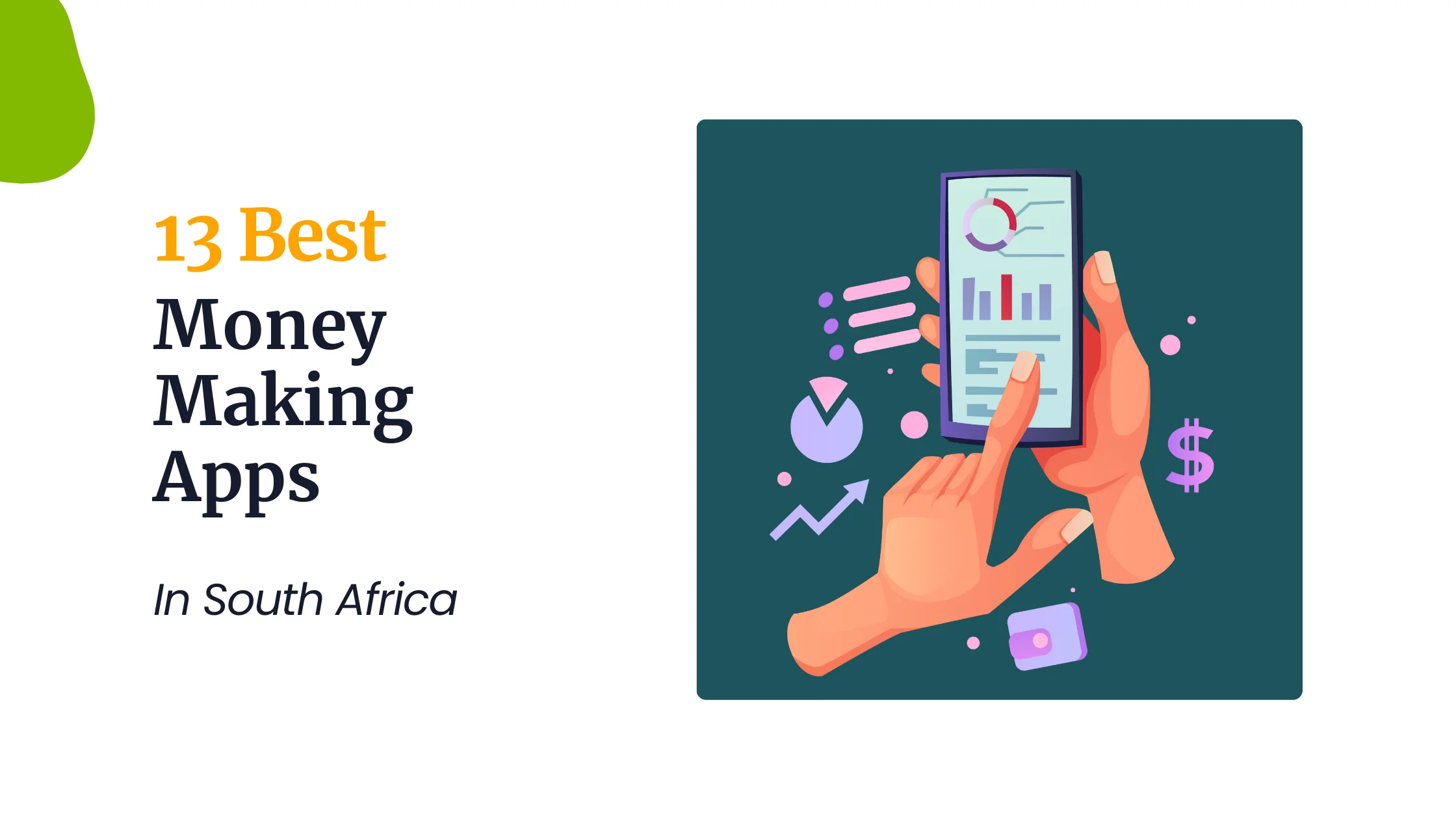Last updated on September 27th, 2023 at 02:26 pm
Online shopping has become the go-to for many consumers in South Africa.
With the projected growth rate of 12.47% CAGR 2023-2027, it’s easy to see why starting an online clothing business is becoming a popular choice for entrepreneurs.
By 2027, revenue in the e-commerce market is expected to reach US$ 11.14bn, opening up countless opportunities for those wanting to break into the industry.
If you are considering starting your own online clothing business in South Africa, this article will provide you with all the information on how to do it successfully.
But why fashion?
Well, see the screenshot below?.
The Statista Global Consumer Survey conducted in South Africa in 2022 revealed that 44% of respondents who answered the query “Which of these items have you purchased online in the past 12 months?” selected “Clothing” as their choice.
The given data displays the outcomes of this survey concerning online purchases by category.
And that’s why you need to open an online clothing business in South Africa.
Related: [100% Answered] What Online Business Can I Start In South Africa?
Table of Contents
Top 20 clothing brands in the world
Before we look at how to start a clothing brand in South Africa, here is a list of the top 20 clothing brands in the world, in order of brand value:
- Nike (United States)
- Louis Vuitton (France)
- Hermès (France)
- Gucci (Italy)
- Chanel (France)
- Prada (Italy)
- Balenciaga (Spain)
- Dior (France)
- Burberry (United Kingdom)
- Armani (Italy)
- Versace (Italy)
- Moncler (Italy)
- Saint Laurent (France)
- Ralph Lauren (United States)
- Dolce & Gabbana (Italy)
- Calvin Klein (United States)
- Tommy Hilfiger (United States)
- Michael Kors (United States)
- Emporio Armani (Italy)
- Fendi (Italy)
These brands are known for their high-quality products, innovative designs, and iconic status.
They are popular with consumers all over the world, and their products can be found in luxury boutiques and department stores around the globe.
Note that this list is based on brand value, which is a measure of how much a brand is worth financially.
It is not necessarily a reflection of popularity or sales.
Selling Clothes Online vs. Offline
Online retail is becoming more and more advantageous as Internet access continues to spread across the country.
It offers convenience, cost savings, and a wider reach than traditional brick-and-mortar stores.
The primary benefit of selling clothes online is having access to customers who might not otherwise have known about your store or had the opportunity to visit it.
With online shopping in South Africa, you can easily advertise your products on multiple websites, social media networks, and search engines at once.
This makes it much easier for people from different parts of the country or even from other countries to find out about your store and purchase your items directly.
Above all, an online shop in South Africa requires less overhead costs such as rent and staff salaries compared with a physical store location which helps keep prices competitive and attractive for customers.
All you have to do is find a place to insert yourself — or a unique value proposition — that allows for quicker growth and the ability to earn money.
But how?
Let’s get right into this now.
I. Conduct Market Research
Any successful venture starts with research.
An online clothing store in South Africa is no different.
Identify the target market for your online clothing business in South Africa
The success of an online clothing business in South Africa depends on how well the target market is identified.
It is essential that you understand who customers are and what their needs, wants and preferences are.
The target market should be chosen based on age, gender, location, and income level.
To identify the target market for an online clothing business, research current trends in the industry and customer behavior patterns.
This can be done through surveys or focus groups with potential customers as well as analysis of competitor’s websites.
Look at the demographic data such as population size, age range and median household income data are useful sources for understanding the target audience.
This information will come in handy when it is tine to create a marketing strategy.
We will cover that later in this guide.
Research the fashion industry in South Africa, including trends and competition
Once you know your target customer, turn your attention to who you are up against.
The fashion industry in South Africa is a vibrant, growing market.
To be successful with an online clothing business, you MUST understand the current trends and competition in the region.
See, researching the fashion industry in South Africa can help you as an entrepreneur gain insight into what customers are looking for and how they can differentiate their businesses from competitors.
Analyzing consumer behavior helps your apparel store understand which types of designs are popular and what price points customers prefer.
And looking at the competition can provide insights into pricing strategies, distribution channels, production methods, marketing tactics, and more.
Analyze consumer habits and preferences
With a population of over 59 million people, understanding what makes South African shoppers tick can help you choose the right products to stock and craft effective marketing messages that appeal to your target audience.
One way to gain insight into consumer behavior is by surveying customers’ needs and wants.
Asking questions like ‘What type of clothing do you prefer?’ or ‘What do you look for when shopping for clothes?’ can help identify trends in the market, such as popular colors or styles, which they can use to inform their product selection.
If that sounds like a tall order, talking with customers directly provides valuable feedback on how they view your brand and how it compares with other offerings in the market.
Determine pricing strategies and positioning within the market
The price of each product should be set to maximize profits while still offering competitive prices that will attract customers.
Strategically position yourself in different markets, highlighting how your products are unique or better than competitors.
To determine which pricing strategy would be most effective for your business, consider researching what other companies in the same industry charge for similar or comparable items.
This is where the information you gathered earlier comes in.
It determines whether your pricing should be higher or lower than these companies.
That’s not enough.
Look at customer reviews on similar products and note any complaints about pricing so you can make sure not to repeat those mistakes with your own items.
That should be about it for your research phase to start an online clothing business in South Africa.
II. Choose an E-Commerce Platform
The research phase is over; what next?
Now you hunt for an eCommerce platform.
In fact, one of the most important decisions to make when starting an online clothing business in South Africa is choosing a suitable e-commerce platform.
What is it?
An eCommerce platform is a tool that allows you to build, launch and manage your online store (in that order?).
Most e-commerce platforms will include features like payment gateways, shipping management, and customer service channels.
Choose a suitable e-commerce platform to host your online clothing business in South Africa
Right off the bat, popular options include Shopify, WooCommerce, and OLITT.
All three offer reliable payment gateways, secure hosting, and a wide range of features to help you create a successful website.
a). Shopify
Shopify is one of the easiest platforms to use, providing comprehensive tutorials and customer support.
It integrates with major payment gateways, including PayPal, Stripe, and Apple Pay, allowing customers to pay by a card or mobile wallet.
With its intuitive drag-and-drop design interface, you can quickly set up your store in South Africa without needing any coding knowledge.
At the same time, Shopify boasts a wide selection of themes and plugins that enable users to customize their store’s look and feel.
Pros
- Shopify offers a variety of features and tools to help users create an online store.
- It is user-friendly and easy to set up.
- It has a wide range of themes and templates to choose from, as well as customization options.
- Its built-in payment processing system is secure and reliable.
- It comes with excellent customer support and robust analytics tools.
Cons
- The cost (around $24 per month for the basic plan) can be expensive depending on the plan chosen and additional features added on top of it.
- Without additional plugins or coding knowledge, the website may not be optimized for search engine rankings or mobile compatibility.
- Certain features are only available in certain plans, so users may need to upgrade if they want access to them.
- Many third-party apps may require additional costs for integration with Shopify stores, which can add up quickly over time.
b). WooCommerce
WooCommerce is a free, open-source platform that is included with every WordPress site.
It provides a range of features and customization options.
It also integrates with major payment gateways, including PayPal, Stripe, and Apple Pay.
WooCommerce also has a range of plugins and themes that enable users to customize their store’s look and feel.
Pros:
- Easy to set up and customize.
- Offers a wide range of payment solutions.
- Integration with WordPress makes it easy to manage content and commerce in one place.
- Large developer community offers many themes, plugins, and extensions for customization.
- Provides detailed analytics on sales and customer behavior.
Cons:
- Requires an understanding of coding to make customizations beyond the basics of theme selection or plugin installation.
- Can be slower than other platforms due to its reliance on WordPress hosting architecture and PHP scripting language .
- Limited scalability may lead to difficulty managing high-volume traffic or large catalogs of products as the store grows in size .
- Security issues can arise if not kept updated regularly with security patches and latest versions of plugins/themes .
- Lack of more advanced features such as bundled product options or subscription services may limit some marketers
c). OLITT
OLITT is a powerful, feature-rich e-commerce platform that offers a wide range of features, including support for custom payment gateways.
It is a highly customizable platform that is suitable for businesses of any size.
OLITT also supports multiple languages and currencies, allowing you to accept payments from customers in South Africa easily.
It also has a wide selection of themes and plugins (through custom code or integrations) to customize your store’s look and feel.
Consider factors such as pricing, features, and ease of use
As you can see, there are several options.
How do you pick the right one for YOU?
First, pick a platform you can afford.
- Shopify starts at $24 per month
- WooCommerce is free, but you need hosting and a domain name. Both cost money.
- OLITT starts at R439 per year AND you get everything you need to start a successful online clothing business in South Africa.
Beyond your budget, features should also be taken into account when deciding on a platform to host the store.
Things such as payment processing and order tracking can help streamline processes and provide more efficient customer service.
And don’t forget ease of use!
Your online store requires frequent updates on products and stocks; if it’s difficult to manage the store, then customers may look elsewhere.
Remember, choosing a user-friendly e-commerce platform with relevant features at an affordable price can help increase sales and make running your online store much easier?.
Evaluate the platform’s payment and shipping options, as well as customer support and security features
Besides what we talked about above, having secure payment methods such as credit cards, debit cards, and e-wallets is essential for a successful online business.
The platform should also offer fast delivery services with tracking capabilities so that customers can track their parcels anytime.
As for customer support, having a reliable team of professionals available 24/7 will ensure customers have their issues resolved quickly in case of any queries or complaints.
And above all, the platform must have comprehensive security measures such as encryption technology for protecting personal information from unauthorized access or misuse.
All of these factors combined will help create an effective and safe shopping experience for customers which will increase sales and profits.
With all in mind, pick a platform and do the following;
- Sign up for a free trial
- Pick the right template for your store and customize it
Get ready for the next step on how to start an online clothing business in South Africa.
III. Source Quality Products
What products will you be selling?
Yes, it is fashion, but what kind?
Through your earlier research, you should know what customers are looking for but getting less of.
Now, your next step is to find suppliers.
It’s getting real?!
Find high-quality clothing products to sell on your online store
Take note of that; finding high-quality clothing products to sell on your store in South Africa is essential for success.
Time to dig even deeper into the market and who is powering it, aka the suppliers.
Begin by researching popular clothing brands and styles in South Africa.
This can help you locate quality suppliers that focus on producing trendy items.
Look for manufacturers with a good reputation, as this will ensure you obtain quality items that look great when they arrive at your customers’ doorsteps.
To pinpoint who is who, browse customer reviews of different suppliers before making any decisions or placing orders.
Another way to find suppliers in South Africa is by attending trade shows or industry events specifically geared toward clothing retailers.
You not only get to see the products but also have a chance to network with other industry professionals and learn more about potential partners.
Online directories of local companies such as TextileInfoMedia.com can provide valuable information on different options available in the market.
Related: Selling Online in South Africa: What You Should Know
Ensure that the products are in line with the trends and preferences of your target market
Staying on top of your target market’s latest trends and preferences is essential.
The key is ensuring that the products you offer reflect those trends and preferences with up-to-date styles and designs.
The last thing you want is to sell outdated products.
You will struggle to push and end up with dead stock.
Keeping an eye on what’s trending in fashion locally and internationally can help you stay one step ahead of your competition.
Take what’s moving fast in another country and experiment here. See how it goes before digging all in.
If you aren’t sure what’s current, look at what others are pushing and do the same.
Read also: How + Where to Source Clothes for a Boutique in South Africa
IV. Create a Unique Brand and Design
Market ✔.
Products ✔.
Platform ✔.
Supplier ✔.
Brand….
Develop a unique and recognizable brand identity for your online clothing business
Brand is why people keep coming back to buy.
Businesses, both online and offline, need a unique brand identity to stand out from the competition.
As such, developing a recognizable brand identity for an online clothing business in South Africa is essential to its success.
Here is what you need to do.
Since you already know your target market, your first assignment is to tailor your branding strategy to appeal specifically to those customers you want to reach.
Think about the type of products you will be selling and who they appeal best to.
What kind of visual message would attract these customers best?
Create a brand name, logo, and slogan that are memorable and appealing to your target market
The brand name should be unique enough to stand out from other competitors but still relate to the type of clothing or style that you’re selling.
It should also be easy for customers to remember.
Start by brainstorming ideas about words and phrases that might work for your brand name.
A great tool for this is a brainstorming platform like IdeaFlip, which allows you to write down your thoughts, get feedback from others, and even test potential names with an audience.
When it comes to designing a logo, there are many tools available such as Adobe Photoshop and Canva that can help you create something professional looking.
Consider incorporating elements like colors, shapes, or fonts that represent your company’s values into the design.
Design a user-friendly and visually appealing website for your online store
First, remember the eCommerce platform you picked earlier?
Time to get back to it and do some work.
First, pick a template that’s both user-friendly and visually appealing.
A template is a pre-made website you can plug and play.
It makes it easier to start an online clothing business in South Africa.
When you sign up for OLITT, Shopify, or Woocommerce, you are asked to choose the template.
Whatever you go with, it should be easy for customers to navigate the website.
It should also have features like product reviews, shopping cart functions, and social media integration.
Once you’ve chosen a template, it’s time to add content such as product images and descriptions.
Use high-quality photos for items displayed on your website to help with customer engagement and trust in your brand.
Ensure that all descriptions are clear, so customers know exactly what they’re buying when they select an item from your store.
Ensure that your website design is mobile-responsive and optimized for search engines
According to Statista, today, about 20 to 22 million people in South Africa use a smartphone, which accounts for about one-third of the country’s population.
So, with the increasing number of people accessing websites via mobile devices, it is essential that your website is mobile-responsive and optimized for search engines.
A mobile-responsive website will ensure that customers have a positive experience when they visit your online store, as the content and design will adjust to fit any screen size.
- Optimize images and other media for mobile devices to ensure faster load times and better performance.
- Navigation and menus should be easy to use on a smaller screen, with clear and concise labeling.
- Use clear and simple fonts that are legible on mobile screens.
- Consider developing a mobile app for your online store, which can offer a more tailored and immersive experience for mobile users
Besides that, optimize your website for search engine results.
This is the #1 key to getting discovered by potential customers online.
You can do this through techniques such as researching relevant keywords and phrases, creating quality content with those terms included in it, and structuring pages in an organized manner that makes them easy to navigate.
V. Manage Logistics and Shipping
How will your customers receive their orders?
Now is the time to think about shipping.
Choosing the most cost-effective and efficient shipping methods for your online clothing business in South Africa is essential to ensuring that you remain competitive.
The first step is to thoroughly research all of the available options.
Consider factors such as delivery times, costs, insurance coverage, and tracking capabilities when making your decision.
South African postal services are generally reliable and offer competitive prices for smaller packages.
Using these services can be a great option for those who aren’t expecting heavy order volumes or large orders.
For heavier items or those requiring more secure transit, consider using private couriers such as DHL or UPS.
These providers offer more extensive coverage and tracking features but may come with higher fees than public postal services.
Finally, always remember to factor in shipping costs when calculating product prices to remain profitable while still providing customers with an affordable delivery option.
Develop a system for tracking and fulfilling orders, including packaging and labeling
An effective system for tracking and fulfilling orders is essential for any successful online clothing business in South Africa.
To begin, create a logical workflow process that allows you to track every step of the customer experience from start to finish.
This includes not only order processing and shipment, but also packaging and labeling with accurate information.
You can use software like ShipStation or Shippo to streamline your fulfillment process.
These programs allow you to easily generate labels for each item, including product information such as size, color, quantity, price, and more.
You can also integrate these platforms with your chosen shipping carriers.
So you can compare rates and select the most cost-effective option for each delivery.
The goal here is to track shipments throughout their journey from when they leave your warehouse until they arrive at their destination.
Manage inventory levels and ensure that orders are fulfilled in a timely manner
BESIDES shipping, you need to accurately predict customer demand and keep enough stock on hand to meet it.
Having a reliable system for tracking sales and managing inventory is can make this work easier.
This can include computerized systems such as inventory management software, or manual methods such as regular stocktaking and record-keeping.
You should also have processes in place for tracking returns and issuing refunds promptly when necessary.
Talking of returns, your business should have clear policies around shipping times ( including refunds and returns), so customers know what to expect from their purchases and can plan accordingly.
VI. Market Your Online Clothing Business
Since you have everything in place, it is time to think about how you will get your online fashion boutique noticed in South Africa.
Enters digital marketing?!
Digital marketing is a set of tools and strategies aimed at promoting products, services, or businesses through digital channels.
Such channels include search engines, social media, email, and other digital platforms.
To say the latest, this is an effective way to reach out to potential customers quickly and cost-effectively.
To market your online clothing business in South Africa successfully and effectively, start by developing a comprehensive digital marketing strategy.
This is actually how you plan to spread the word online about your business.
For example, posting pictures of their clothes on social media, creating ads that show up when people search for clothes online, or sending emails to people who have bought from them before to let them know about new clothes they have in stock.
If you take and posts a picture of a new dress on Instagram and lots of people like and share it, that’s a way of doing digital marketing because it’s helping to get the word out about their clothes.
Utilize social media platforms to engage with potential customers and build brand awareness
With 28 million social media users projected for 2022, the opportunities for making connections and creating relationships are endless.
You can take advantage of this by creating engaging content about your products and services on platforms such as Instagram, TikTok, Facebook, Twitter, and LinkedIn.
To give you an idea, here are some social media post ideas for an online clothing store:
- Feature a “look of the day” or “outfit of the week” with one of your products.
- Share customer photos wearing your clothes and encourage others to share their own photos too.
- Highlight a new product or collection with a sneak peek or behind-the-scenes look at the design process.
- Share tips and tricks on how to style your clothes for different occasions or seasons.
- Run a contest or giveaway where followers can win a piece of clothing or a discount code.
- Share fashion news or trends and how your clothes fit into the current styles.
- Post a “throwback” photo of a past collection or popular product.
- Show the versatility of a product by styling it in different ways or for different body types.
- Share a customer review or testimonial about a popular product.
And to maximize brand visibility even further, use targeted Facebook/Instagram/Twitter ads.
They are cheap and extremely profitable (assuming you know what you are doing).
Or join industry-specific groups that share similar interests as the business’s target audience.
Leverage email marketing to keep customers informed about new products and promotions
Email marketing is a great way to keep customers informed about new products and promotions.
According to statistics, the average return on investment (ROI) through email marketing is $36 for every $1 spent.
Simply put, you invest a dollar and in return receive 36 times from it.
This makes it one of the most cost-effective ways of reaching out to potential customers and engaging them with your online clothing business.
You can set up automated emails that send to customers when they sign up or purchase items from your store.
Also segment your customer base according to their location, purchase history, interests, or other factors.
And then target specific groups with personalized messages.
You can also use newsletters as another way to stay in touch with existing customers while introducing them to new products and special offers available through your online store.
Use search engine optimization (SEO) techniques to improve your website’s visibility in search
SEO can drastically improve the visibility of your website in search engines such as Google and Bing, allowing more people to find you.
To start, basic SEO tactics like keyword research and optimizing page titles and descriptions are necessary to ensure that your website is properly indexed by search engines.
Next, create content with targeted keywords so that customers can easily find what they’re looking for on your site.
And add quality backlinks from other relevant websites or pages on your own site – this will help build trust with search engines and further increase the visibility of your website.
Lastly, make sure to regularly update your website with fresh content to keep it current and engaging for visitors.
Develop partnerships and collaborations with influencers and other brands to expand your reach and appeal to your target market
Starting an online clothing business in South Africa requires more than just a great product.
You must also find ways to reach out to potential customers and build a reputation for your brand.
One way to do this is through collaborationg with influencers and other brands.
In itself, influencers are individuals who have established trust within their audience, giving them the power to influence purchasing decisions.
And by partnering with them, you can tap into new audiences that may be interested in what you’re offering.
At the same time, working with existing brands can help boost your visibility among their followers and give your business credibility by being associated with respected industry leaders.
VII. Comply with Legal Requirements
Starting an online clothing business in South Africa requires you to comply with certain legal requirements.
First, register your business with the appropriate authorities.
This involves registering your company name, obtaining a tax number, and applying for VAT registration.
Doing so gives you legitimacy and allows you access to the necessary resources and infrastructure needed to run a successful business.
Ensure that all of the items sold in your store comply with applicable safety standards set by South African law.
And that all goods are correctly labeled, including information such as country of origin and any relevant warnings or instructions for use.
Familiarize yourself with consumer protection laws so that customers have peace of mind when they purchase from your store.
Related: 3 Steps To Registering a Small Business in South Africa
VIII. Manage Your Finances
The success of your online boutique will depend on how well you manage your finances.
To it have it smooth as possible, create a comprehensive financial plan.
This should include an operating budget that outlines the costs associated with running the business such as advertising, rent, taxes, and inventory.
Have a pricing strategy to ensure that your products are competitively priced in order to attract customers and remain profitable.
You should have this at hand considering you did some work on it earlier.
You may also need to consider capital investments for equipment or manufacturing costs if you are producing items yourself.
This is where a financial plan will provide guidance on.
Gives when and where money should be spent in order to grow the business over time.
It can also help protect against potential losses or cash flow issues arising from unexpected expenses or slow sales periods.
And above all, monitor your budget regularly and make adjustments accordingly as market conditions change or new opportunities arise.
IX. Provide Excellent Customer Service
Exemplary customer service is essential for any successful business, and starting an online clothing business in South Africa is no exception.
Having a clear strategy to ensure that your customers are taken care of will not only increase customer loyalty but also boost sales.
Here are some tips to get you started:
First and foremost, create a plan that clearly outlines your goals for providing excellent customer service.
This can include everything from the time it takes to respond to inquiries, the manner in which you communicate with customers, and how you handle complaints or feedback.
Make sure that all employees understand what’s expected of them when interacting with customers and have access to any necessary resources or training materials.
Another important aspect of providing great customer service is staying up-to-date with changes in the industry and trends within your target market.
For example, now that you’re selling clothing online, you should stay informed of the latest fashion trends, popular colors, and best-selling items.
In addition, make sure that your customers have access to a variety of payment options and that they feel comfortable and secure when making purchases.
You should also provide clear information on product descriptions, shipping policies, and return policies.
Respond promptly to customer inquiries and complaints.
Show that you value your customers and that you’re willing to go the extra mile to ensure their satisfaction.
X. Continuously Improve Your Business
An online clothing business in South Africa needs to continuously strive for improvement in order to succeed.
You should analyze sales and customer data regularly to identify opportunities for growth and development.
This will help you understand which areas of your business could benefit from changes or adjustments, such as introducing a new product line or optimizing the shopping experience on their website.
Go through key performance indicators (KPIs) like conversion rate, average order value, and customer retention rate to stay on top of current trends and make informed decisions about how best to respond.
Beyond this, explore different marketing strategies (other than what we’ve discussed) that may be effective at driving more sales.
And even experiment with targeted campaigns on social media platforms or invest in content marketing initiatives such as ebooks or video tutorials.
Above all, understanding what resonates with customers is paramount when it comes to staying competitive in an ever-evolving market.
Don’t sell blindly!
How to start a clothing brand in South Africa
To start a clothing brand in South Africa, you will need to follow these steps:
- Develop your fashion design skills. If you don’t have any formal fashion design training, there are many online and offline courses available. You can also learn by reading books and magazines, and by shadowing or working with experienced fashion designers.
- Create a clothing business plan. This will help you to define your brand, your target market, and your financial goals. Your business plan should also include a marketing plan and a production plan.
- Follow fashion trends. It is important to be aware of the latest fashion trends so that your clothing line is stylish and up-to-date. You can do this by reading fashion magazines, attending fashion shows, and following fashion bloggers and influencers on social media.
- Build a strong brand. Your brand is what will set you apart from other clothing lines. It is important to develop a strong brand identity that reflects your unique style and values. This includes creating a brand name, logo, and tagline.
- Design and develop your clothing brand. Once you have a strong brand identity, it is time to start designing and developing your clothing line. This includes creating sketches, choosing fabrics, and finding a manufacturer.
- Source fashion fabrics or design your own. You can source fashion fabrics from a variety of suppliers, both locally and internationally. If you have the skills and expertise, you can also design your own fabrics.
- Set up production and manufacturing for your clothing line. Once you have designed your clothing line, you need to find a manufacturer to produce it. There are many garment manufacturers in South Africa, so you should be able to find one that meets your needs and budget.
- Plan your collections around fashion seasons. In the fashion industry, it is important to release new collections on a seasonal basis. This will help you to keep your clothing line fresh and up-to-date.
- Pitch your clothing line to fashion retailers. Once you have produced your clothing line, you need to start pitching it to fashion retailers. You can do this by attending trade shows, sending out press releases, and contacting retailers directly.
- Build an online clothing store. Selling your clothing online is a great way to reach a wider audience. You can set up your own online store using a platform like Shopify or WooCommerce.
- Open a retail store, launch a pop-up, or sell at markets. If you have the budget, you can also open a retail store to sell your clothing. Alternatively, you can launch a pop-up shop or sell your clothing at markets and fairs.
- Learn from the pros. There are many successful clothing brands in South Africa. Take some time to research these brands and learn from their successes. You can also reach out to other clothing designers and entrepreneurs for advice and guidance.
Starting a clothing brand is a lot of work, but it can be a very rewarding experience. By following these steps, you can increase your chances of success.
Here are some additional tips for starting a clothing brand in South Africa:
- Focus on a niche market. It is better to be a big fish in a small pond than a small fish in a big pond. Choose a niche market that you are passionate about and that you have a good understanding of.
- Use high-quality materials and construction. Your clothing should be well-made and durable. Customers are willing to pay more for high-quality clothing.
- Price your clothing competitively. You need to price your clothing competitively in order to attract customers. However, don’t be afraid to charge a premium price for high-quality clothing.
- Market your clothing brand effectively. Use social media, email marketing, and other marketing channels to reach your target market.
- Provide excellent customer service. Go the extra mile for your customers and they will be more likely to keep coming back.
Starting a clothing brand is a challenging but rewarding endeavor. By following the tips above, you can increase your chances of success.
What To Do Next
As can be seen from the information presented in this article, starting an online clothing business in South Africa is a potentially rewarding and lucrative endeavor.
The key to success is researching the market, finding a competitive product or niche, creating a strong marketing plan, and leveraging digital platforms for maximum visibility.
Ensure that your store offers secure payment options and reliable delivery services in order to maintain customer trust.
With the right preparation and dedication, entrepreneurs who launch an online clothing business in South Africa have the potential to carve out a successful career while offering stylish products that consumers are excited to purchase.
The combination of diligent research, regular promotion, and exceptional customer service will help ensure success no matter what phase of growth is currently underway.
With these tips in mind, you have all you need to make your dream of running an online clothing business in South Africa come true.
Read here how to start an online business in South Africa.
 Web Hosting
Web Hosting Windows HostingBuilt for Windows apps and websites – stability, speed and flexibility
Windows HostingBuilt for Windows apps and websites – stability, speed and flexibility Reseller HostingLaunch a hosting business without technical skills or expensive infrastructure
Reseller HostingLaunch a hosting business without technical skills or expensive infrastructure Affiliate ProgramRefer customers and earn commissions from sales across our platform
Affiliate ProgramRefer customers and earn commissions from sales across our platform Domain SearchFind and secure a domain name in seconds with our quick lookup tool
Domain SearchFind and secure a domain name in seconds with our quick lookup tool CO ZA Domains
CO ZA Domains All DomainsExplore domain names from over 324 TLDs globally – all in one place
All DomainsExplore domain names from over 324 TLDs globally – all in one place Whois
Whois VPS
VPS SSLs
SSLs








